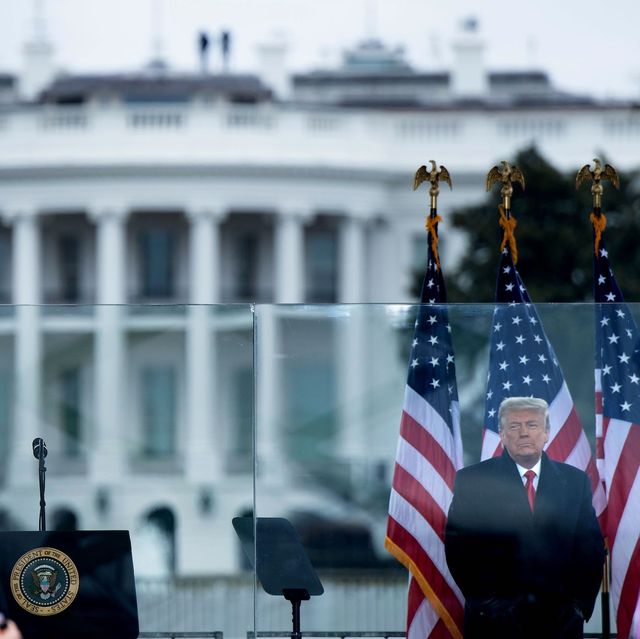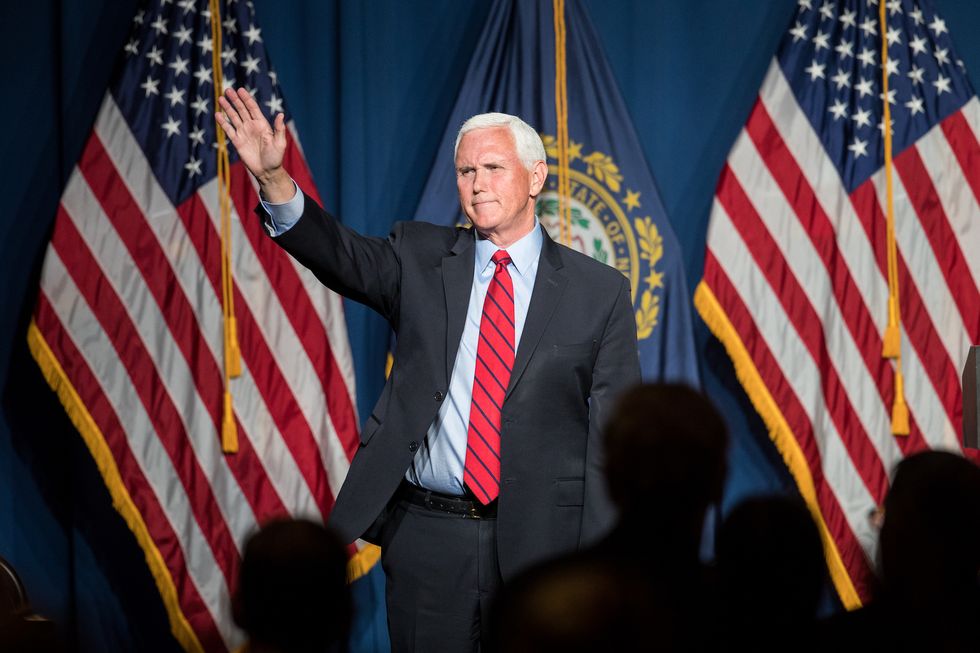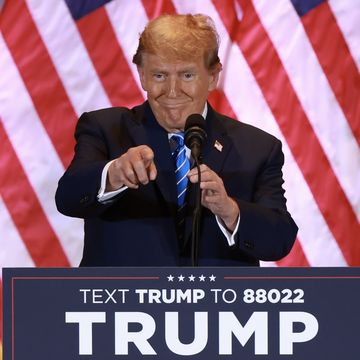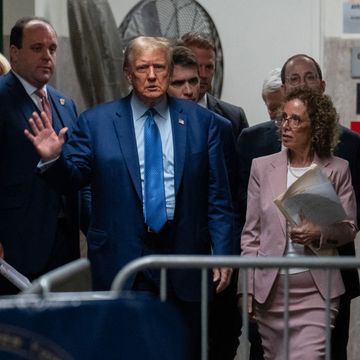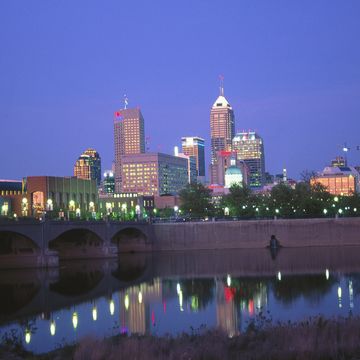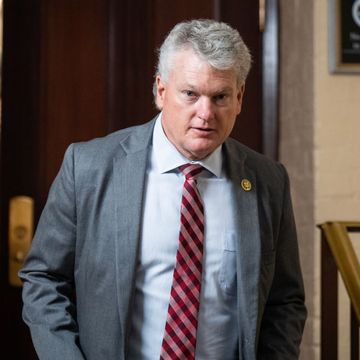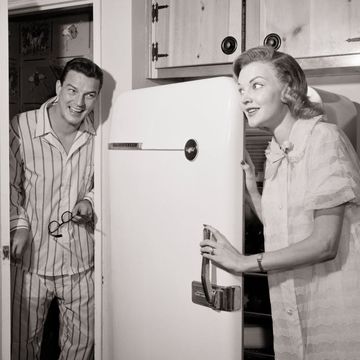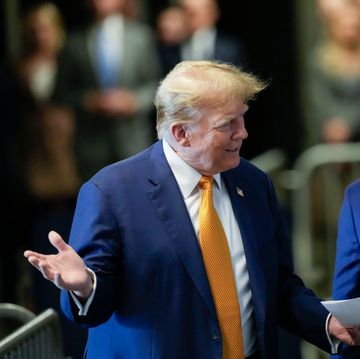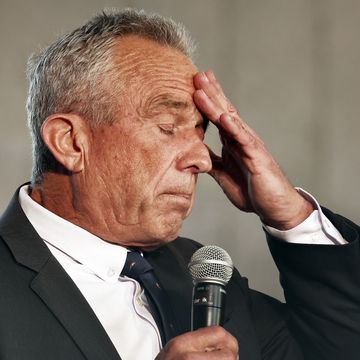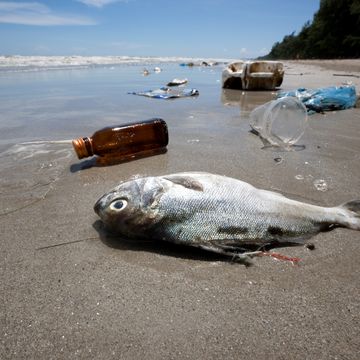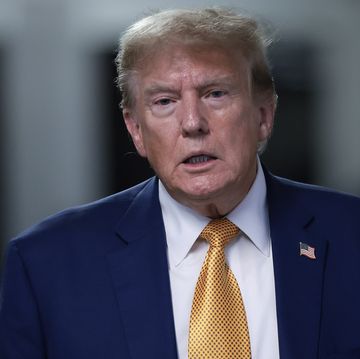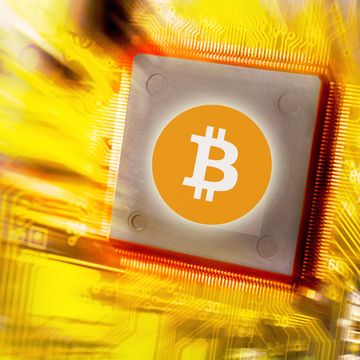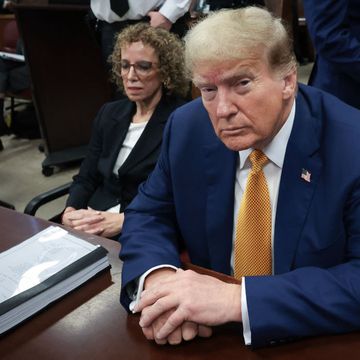"If I was going to do a coup," said the former President of the United States, "one of the last people I would want to do it with is General Mark Milley." Later in the statement, he added that the Chairman of the Joint Chiefs "had no courage or skill, certainly not the type of person I would be talking 'coup' with. I'm not into coups!"
Finally, an answer to the question of what it might have looked like if O.J. Simpson were cast in Mean Girls. But this statement also came in response to Milley's comments in a new book from Washington Post reporters Carol Leonnig and Philip Rucker, I Alone Can Fix It, on Donald Trump's disastrous final days in the big chair. In the book, Milley is depicted as fearing a coup attempt from the then-sitting president, working with the other Joint Chiefs on a plan to resign en masse if Trump attempted anything truly insane. Like some of us around here, Milley was gravely concerned by Trump's moves after Election Day to purge the security apparatus and fill senior positions at the Pentagon and the Justice Department with people Milley perceived as more dependable loyalists, all while yelling that the election had been stolen from him and he was the rightful president for four more years. Leading up to January 6, "Milley told his staff that he believed Trump was stoking unrest, possibly in hopes of an excuse to invoke the Insurrection Act and call out the military."
Of course, Trump did do something insane. He drew his most enthusiastic supporters to Washington on the day Congress was set to confirm he would soon leave power and sent them down to the Capitol to try to prevent that certification from taking place. They proceeded to riot, attacking police officers with whatever was available and breaking into the seat of the national legislature. And as the situation spun out of control, another excerpt from Leonnig and Rucker's book, published Thursday in the Washington Post, sheds some light on what the sitting president—and commander-in-chief charged with defending the Constitution and the homeland—was up to.
At the White House, Trump was back in his private dining room watching everything unfold on television. Aides, including Dan Scavino and Kayleigh McEnany, popped in and out. The president was riveted. His supporters had heeded his call to march on the Capitol with “pride and boldness.” For Trump, there was no more beautiful sight than thousands of energetic people waving Trump flags, wearing red MAGA caps and fighting to keep him in power.
“He thought, ‘This is cool.’ He was happy,” recalled one aide who was with Trump that afternoon. “Then when it turned violent, he thought, ‘Oh, crap.’ ”
Sen. Lindsey O. Graham said, “It took him a while to appreciate the gravity of the situation. The president saw these people as allies in his journey and sympathetic to the idea that the election was stolen.”
It's safe to say we can take the aide's word here with a grain of salt. Did Trump say that he believed this to be a dangerous and terrible situation that needed to be stopped as soon as possible? The aide can suggest all he or she wants about what Trump was thinking, but this is what he was doing:
As rioters marauded through the Capitol, it was clear whom they were looking for. Some of them shouted, “Hang Mike Pence!” Trump didn’t exactly throw them off the hunt. At 2:24, the president tweeted, “Mike Pence didn’t have the courage to do what should have been done to protect our Country and our Constitution.”
This, after Trump had sicced them on Pence in the first place with nonsense about how the vice president could singlehandedly prevent the election results—already certified in the individual states from whence they came—from being certified in the national legislature.
Back at the White House, Kellogg was worried about Pence’s safety and went to find Trump.
“Is Mike okay?” the president asked him.
“The Secret Service has him under control,” Kellogg told Trump. “Karen is there with the daughter.”
“Oh?” Trump asked.
“They’re going to stay there until this thing gets sorted out,” Kellogg said.
Trump said nothing more. He didn’t express any hope that Pence was okay. He didn’t try to call the vice president to check on him. He just stayed in the dining room watching television.
This gets at what was undoubtedly a weird dynamic between the president and the vice president who'd served him so slavishly. Trump knew this man on a first-name basis, they'd been through the political wars together over a half a decade. Pence had routinely debased himself on Trump's behalf. And yet, like everyone else, when the time came that Pence became more useful under the bus than at Trump's side, under he went. It's just that in this case, Pence wasn't fired like a dog like so many other Trump toads, merely humiliated in public. A violent mob was chanting for his extrajudicial execution as a traitor to The Cause.
All through the excerpt, there is the undercurrent question of what the response was from the security apparatus. Christopher Miller, Trump's post-election Acting Secretary of Defense, has been engaged in an extensive campaign to get his side of the story out there in the aftermath. That side, recounted again in the book excerpt, is that the security forces were, first of all, caught somewhat flat-footed by the ferocity of the protesters-turned-mob, and also that Pentagon leaders were highly wary of the "optics" of troops at the Capitol after the PR disasters of the previous summer, when D.C. security forces responded so ham-handedly to mostly peaceful protests following the killing of George Floyd. That is the reason supplied for why D.C. National Guard Commander General William Walker "didn’t have permission to dispatch the National Guard...Only the top official at the Pentagon could order that, because of a memo Chris Miller, the acting defense secretary, had signed a few days earlier." That order did not exactly come promptly on the day.
For unlimited access to Esquire's political coverage, including an exclusive weekly newsletter from Charles P. Pierce, you can join Esquire Select here.
And then there's this, regarding the nearby Maryland, Delaware, Pennsylvania, and Virginia National Guard units:
Despite Milley recommending that the Pentagon call up neighboring National Guard units immediately, [Army Secretary] Ryan McCarthy hadn’t gotten around to it until more than 2½ hours after the Capitol was breached.
Maybe we'll never truly know why it took so long for the Capitol Police engaged in hand-to-hand combat with the president's crazed acolytes to get some backup. Maybe it really was down to lack of preparation along with concern about how it all would look. Maybe a lot of this is revisionism by Milley, who's certainly been making the rounds in these various new accounts. The Post excerpt here likely had some input from Ivanka Trump or her allies, as the First Daughter-slash-Senior Adviser-slash-Entrepreneur is painted in every scene as a kind of hero who's above it all, seeking to curb her father's worst impulses and guide him on the Higher Path, with formidable foresight on the grand sweeps of history.
But one thing is damn clear: Donald Trump, American president, was not interested in putting a stop to what was happening.
As Pence gave orders to the military, the actual commander in chief was effectively AWOL. Trump spent the afternoon glued to the television watching the drama unfold.
After his tweet castigating Pence amid the height of the attack, Trump had issued two tweets that many of his aides felt still missed the mark. In neither did Trump call on his supporters to leave the Capitol...At no time that Wednesday since the Capitol siege began did these government and military leaders hear from the president. Not even the vice president heard from Trump.
It's a point the impeachment managers touched on during Trump's second trial, which suffered greatly due to a lack of exploration of what Trump was doing while the Legislative Branch of the government came under mortal attack. (Could Milley's input have helped there? Was he unwilling to put his account under oath? Was he asked?) Regardless of whether Trump was actively working to aid the rioters in their cause (though he did place a call mid-riot to Republican Senate allies urging them to continue delaying the certification—long enough for...what?), the president did not lift a finger to stop the madness.
Because he wanted the madness to continue. Because it was the last chance saloon as he attempted, through every means available, to stay in power in contravention of the will of the American people. He'd failed to win the election. He failed to get it overturned in court. He failed to convince local officials to disregard the will of the voters in their jurisdictions. And he failed to get his allies in the federal legislature to block the certification of his loss. So he turned to violent force—well, other people's violent force. He may have said he was going to walk down to the Capitol with them, but he was always going to watch on TV.
Jack Holmes is a senior staff writer at Esquire, where he covers politics and sports. He also hosts Unapocalypse, a show about solutions to the climate crisis.
